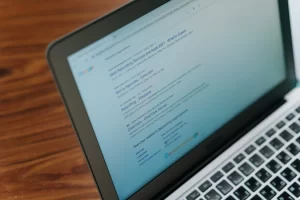When site owners start publishing content onto the vast space of the world wide web, they begin to wonder at once: “How fast will Google index my site?” Many of us expect spiders to suddenly come knocking on our door, ready to crawl through the site, and index it immediately on the search engine.
Those desperate to rake in traffic might resort to a few dirty tactics to beat intense competition from other blogs and websites. But black-hat SEO tricks will get you banned.
How do some of the best websites manage to dominate search engine results pages as soon as they post new content like catalogues and resource pages? The secret is a few quick and simple fixes.
Optimise the Site for Target Keywords
Gone are the days when keyword stuffing lured in search spiders easily. Today, the artificial intelligence behind Google Search no longer relies simply on keyword density within the text. It is now all about a healthy distribution of target keywords in different elements of the site. Here are a few guidelines of where to place keywords:
- Page title: A long headline might not only be jarring — it could also be misconstrued as keyword stuffed if you’ll end up mentioning the same concept twice. It helps to keep the page title length to 70 characters or less.
- Meta description: The meta description serves an SEO and a readership purpose. When search engines find that the words in the meta description match the keywords in a search query, they will pull up the page as part of the results. Hence, it’s important to know which keywords you’ll highlight in the snippet. This same snippet also appears on the results page to give readers a snapshot of your content. Keep it to a maximum of 155 characters.
- Title text in H1, H2 and H3 tags: The page title is one of the first things that will attract attention to your site, but you can also break up text into different sections using headers. Introduce your content by setting them in header tags and organise your thoughts around each header. They work like “signposts” pointing the reader and the bot to the direction of your article.
- Alternative text for images: Google loves webpages that offer useful content, and the alternative text, or alt-text, is one good example. Alt-text is used to describe an image vividly to users who need the contents of the screen to be read out. The clearer and more descriptive the alt-text, the more useful it is. Instead of typing in “coffee shop,” for instance, it might be best to write: “A coffee shop filled with people chatting.”
- Keywords in the body of the article: Opt for descriptive long-tail keywords as opposed to generic short-tail ones. Be careful not to overuse the same terms. Place them only in parts where they are necessary and they sound natural.
Keep The Site Fresh, Useful and Original
Your first few posts are crucial to establish your brand identity and the tone of your content. But it’s your consistency through time that will seal the deal with Google. The Panda update ensured stale and useless content were filtered and pushed down the ranks. More than an algorithm update, Panda actually forces content producers to come up with original material that people will want to click on.
Build Your Authority
Don’t think of your site as just a collection of text, graphics, and links without any flow or direction. Use it to reflect what you’re good at and to convey your brand message. When you build up your site as a resource center, you will find search spiders will continue to pull information from it. In time, the bots will find their way back to you more easily than the last time. As more users click through to your site, other pages will learn to link back to you as a reference. With that, your page ranks higher
To rank at the top of Google Search results, you need to build a healthy and lasting relationship with the search engine. Get them to become familiar with the quality of your site by making sure all these key elements are in place.



